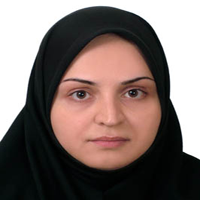Solubilisation of Waste Activated Sludge by Ultrasonic Bath Pre-treatment
Activated sludge process is commonly utilized for the treatment of wastewater with the benefits of high efficiency and easy operation. However, during the biological treatment of wastewater, huge amounts of waste biomass (called as “waste activated sludge (WAS)”) are inevitably generated in the process. The WAS should be treated in order to reduce the water content of raw WAS, transform the highly putrescible organic matter into stable or inert organic and inorganic residue, and finally condition the residue to meet disposal acceptance regulations. But, WAS treatment and disposal, representing 50–60% of the total operating costs of the wastewater treatment. WAS is produced in massive volumes; specifically, more than 25,000 tons of WAS is produced in Iran per year. Anaerobic digestion is one the most applicable methods in WAS stabilization due to its ability to reduce WAS volume and produce biogases. A mixture of primary and secondary sludge (WAS) passes through anaerobic digestion, but this process is more difficult for WAS than primary sludge. However, the hydrolysis stage limits anaerobic WAS digestion. To optimize the general process of WAS anaerobic digestion and increase hydrolysis performance, it would be possible to pre-treat WAS by various mechanical, thermal, chemical, and biological methods. In this research the influence of ultrasonic bath pre-treatment was studied to observe the effects of ultrasonic density and sonication time on WAS solubilisation. The charactristics of ultrasonic wave producer was surface area of 240×137 mm2, frequency of 40 kHz, power of 265W. The effect of ultrasonic waves with these characteristics on WAS solubilization was investigated for the first time. Increases in soluble chemical oxygen demand and soluble polysaccharide concentration, as well as the decrease in volatile suspended solids, indicate that pre-treatment could cause WAS solubilisation. The cavitation produced by ultrasound waves radiation breaked down the bacterial cell wall and released the intracellular substances into an aqueous phase. Since polysaccharide is one of the main parts of extracellular polymeric substances (EPS), a polysaccharide concentration increase in the solution indicated that ultrasonication disintegrates WAS floc and the EPS value reduced in biological flocculation. Increases in ultrasonic density and sonication time caused more solubilisation, stronger cavitation arised with an increase in ultrasonic density and with increased ultrasonic density; more floc structure disintegration was achieved in less time. The best Pre-treatment efficiency was achieved in ultrasonic density 0.53 W/mL and 20 min. sonication time and it caused 20% increase in biogas production compared to the control sample. In addition to WAS pre-treatment for solubilisation, the ultrasonic bath pretreatment could improve WAS settling properties. After pre-treatment with the lowest energy in experiment rang, the diluted sludge volume index (DSVI) decreased by about 10% compared to the control sample; this reduction continued upon the energy increase. Reduction of EPS from around WAS floc reduced the negative charge of WAS floc and increased the WAS floc’s fall rate. Therefore, DSVI reduction resulting from ultrasonic bath pre-treatment could be due to the EPS concentration reduction around WAS floc. Likewise, the influence of pre-treatment on electrical conductivity was also examined for the first time. Given the change in WAS, electrical conductivity with ultrasonic bath pre-treatment, in addition to other tests like chemical oxygen demand and volatile suspended solids, electrical conductivity could also effectively assess WAS solubilisation.
- حق عضویت دریافتی صرف حمایت از نشریات عضو و نگهداری، تکمیل و توسعه مگیران میشود.
- پرداخت حق اشتراک و دانلود مقالات اجازه بازنشر آن در سایر رسانههای چاپی و دیجیتال را به کاربر نمیدهد.


